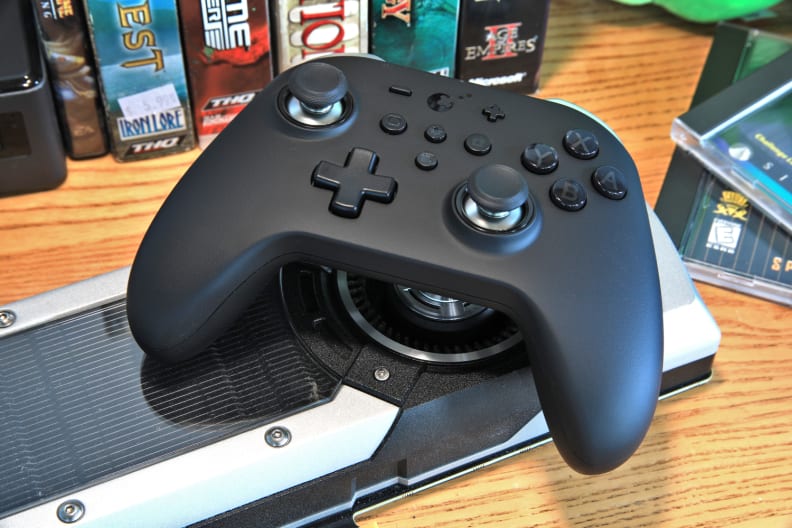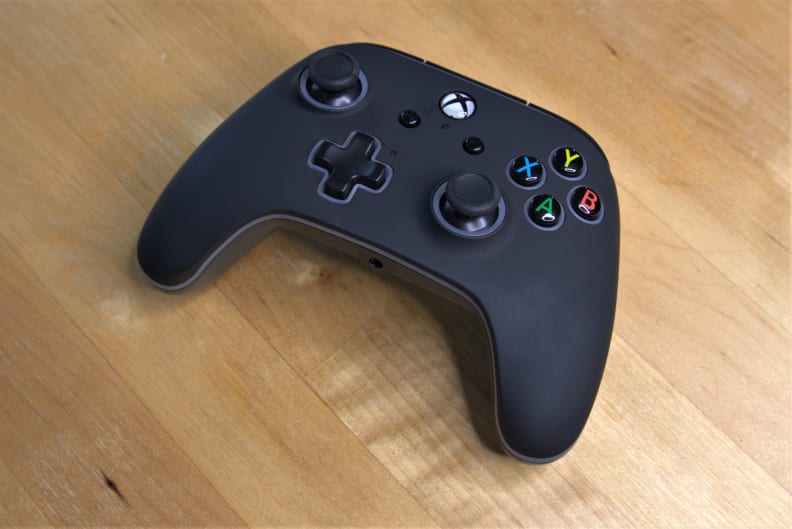The PC is an incredibly diverse gaming platform and you can find ports of titles from every genre, console, and era of gaming. Many games were designed for a gamepad, so you’ll need one for the best gaming experience. The best PC gaming controllers should be able to tackle every genre, from fighting games to first-person shooters, with ease.
Gamers who just want to stick to PC-only titles should read our round-up of the best gaming keyboards or best gaming mice. But if you want to skip the keyboard and mouse and are looking for the best PC controller to play Forza Horizon 5 with, read on.
The best PC controllers often feature adaptive triggers, textured grips, and sometimes even RGB lighting. If you’re looking for the best mix of comfort and features, the Gulikit KingKong 2 Pro (available at Amazon) is the best PC controller you can buy right now. It’s durable, rich with features like Hall Effect thumbsticks and triggers and built-in macro recording, and supremely comfortable. It can be used with your PC, Mac, mobile devices, or Nintendo Switch over Bluetooth, and pair with up to four devices at a time.

Credit: Reviewed / Matthew S. Smith

The Gulikit KingKong 2 Pro is a top-tier wireless controller that doesn’t skimp on features.

Credit: Reviewed / Matthew S. Smith

If you love the Xbox controller but don’t want to pay Xbox prices, the PowerA Spectra is a great option.
Other PC Gaming Controllers We Tested
How We Test PC Gaming Controllers
The Tester
I’m Matthew S. Smith, a technology journalist, reviewer, and geek with fifteen years of experience writing about PC gaming hardware and peripherals. You can find my work at Reviewed, IEEE Spectrum, Wired, PCWorld, Lifewire, IGN, Business Insider, PCMag, Consumer’s Digest, MakeUseOf, The Escapist, and other publications. I was Lead Editor of Reviews at Digital Trends in 2020, where I worked as an editor since 2014. I’ve reviewed and tested thousands of laptops, keyboards, mice, game controllers, and monitors.
How We Test
We test PC game controllers in the usual way: by playing games on them. Every controller considered for this list was tested first-hand with a custom desktop PC over wired and wireless connections (if supported).
The games we used for testing included several keystone titles that we returned to with every gamepad: Final Fantasy XIV, Microsoft Flight Simulator, Control, and an emulated version of Super Mario World. They represent a wide variety of genres and control schemes.
What We Look for in PC Gaming Controller Layouts
Modern PC game controllers come in two basic layouts: asymmetrical or symmetrical.
An asymmetrical layout, like the Xbox Wireless Controller, places the left joystick above the D-Pad while the right joystick is below the four primary buttons. This asymmetrical design is superior for games that use joysticks for 3D movement. The D-Pad is often used to provide additional action buttons in these titles, and this layout makes the D-Pad easier to access.
The symmetrical layout, championed by Sony, places the joysticks beside each other and pushes the D-Pad up. The D-Pad is harder to access when using the joysticks for movement, but the joysticks are easy to ignore when playing a game that uses the D-Pad for movement.
We give slight preference to symmetrical layouts when testing PC game controllers. We feel a symmetrical layout is more versatile than an asymmetrical layout. This is because symmetrical layouts are generally preferable for 2D games that play best with a D-Pad but are still great in 3D titles. A versatile controller is useful for PC gaming because the platform has access to a wider range of games and genres than a console.
Your mileage may vary, however. Players only interested in modern 3D titles and console ports may lean towards an asymmetric layout.
Wired vs. Wireless
Most modern gamepads support both wired and wireless connections. The wireless connection is typically enabled through Bluetooth or 2.4 GHz over a USB dongle. Microsoft offers a proprietary wireless dongle for the Xbox controller, and cloud gaming controllers, like the Google Stadia and Amazon Luna controller, use Wi-Fi when connected to their respective services.
Wired connections remain the easy option. Wired controllers are reliably detected by Windows and require no additional setup to use. There’s no need to worry about latency or drop-outs caused by interference from other devices.
Most controllers support a Bluetooth connection that should, in theory, be automatically detected by Windows. This didn’t always prove true in our testing. Wireless can also fall victim to interference from other devices.
Most PC game controllers support a wireless connection but also work over USB, providing a backup if wireless goes awry. You do pay a slight premium for wireless, however. The PowerA Spectra Enhanced, our value pick, is a wired controller that undercuts wireless competitors without compromising quality or layout.
Cloud Controllers have Real Problems
The Google Stadia controller and Amazon Luna controller were included in our testing. Each has a solid, though generic, layout that doesn’t offend. That doesn’t mean they’re a great choice, however.
Amazon’s Luna controller can connect to a PC wirelessly over Bluetooth. This lets it function as a generic PC gamepad. We encountered connectivity problems over Bluetooth, however, so we had to revert to a wired connection.
The Google Stadia controller is technically wireless but only supports Wi-Fi and can’t be used wirelessly outside the Google Stadia platform. This contributed to its low ranking in our tests and its exclusion from this list. The Stadia controller isn’t a great choice unless you intend to play Stadia exclusively.
Both cloud gaming controllers were among the most expensive we tested. That makes them hard to recommend over the less expensive, easier to use, and more broadly compatible PC game controllers that top our list. We recommend staying away from either.
Rechargeable vs. Disposable Batteries
A majority of wireless controllers use a built-in rechargeable battery. However, Microsoft’s Xbox controller and Amazon’s Luna controller use disposable AA batteries.
Built-in rechargeable batteries are superior. Disposable AA batteries are inexpensive, but the cost of replacing batteries will add up over time. A long gaming session could easily eat up a pair of non-rechargeable batteries. You’ll eventually spend as much on disposable batteries as you did on the controller itself.
A rechargeable battery is lighter than disposable batteries and allows for a more compact design on the rear of the controller. This makes a controller with a rechargeable battery more comfortable to use.
Controllers that use disposable AA batteries can be upgraded with a rechargeable battery pack or can be used with rechargeable AA batteries. This is an extra cost, however, and undercuts the value of controllers that use disposable batteries.









